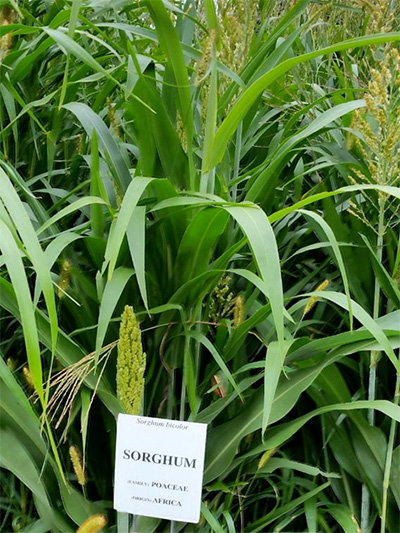 Sorghum bicolor (L.) Moench
Sorghum bicolor (L.) Moench
Poaceae (grass family)
Location: Small grains
Origin: A native of tropical Africa but it is now grown in most parts of the world.
Biophysical Requirements: Adapted to areas with a mean temperature of 27C (80F) during the growing season, and the minimum growth temperature is 15.5C (60F). The crop is well adapted to drought and hot conditions but also does well in humid environments.
Food Uses: There are several types of sorghum: grain (milo), forage, dual purpose, sugar and syrup types. The tall leafy types with small panicles are mainly for forage while the shorter ones (dwarfs) with lower stalk to grain ratios are for grains. Hybrids between the forage and grain sorghum have produced the dual purpose types. Young plants and leaves of sorghums contain a cyanogenic glucoside, which upon ingestion breaks down to liberate cyanide gas which is poisonous. Well‐cured hay and fodder and silage are safe. Sorghums may be pastured, cut for hay or silage, or may be harvested for grain.
See also Purdue University new crops website.


